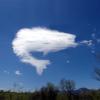I'd kept written fishing journals since 1977, which morphed into word processed journal entries, into video journals now.
The basic info I record are:
-Water body
-Recent weather trend (usually the week to couple days prior)
-Immediate sky conditions (cloud cover)
-Wind (“strength”, direction, water surface effects)
-Water clarity/visibility (guesstimates)
-Water temps: ST's and, eventually, profiles. This evolved into my realizing I needed to learn how, and at what rate, water heats and cools. Became a project unto itself. A chunk of a given fishing day involved tracking temps at various depths and shorelines throughout the day. One is not casting when doing this. Idea was to be able to predict, or get an accurate feel for, how water temps change weekly and daily, so that I could interpret conditions more accurately.
-Note events that provide clues to seasonal timing or might affect my fishing.
The rest, the fishing, was written about in prose, journaling form, a story about the outing: What I thought was happening and how I approached it. This also helped in triggering memories from that day; Works much of the time.
The most valuable uses for my journals have been:
-Checking seasonal conditions from previous years before re-visiting a water body. I fish a number of waters so I may not revisit each every year. Helps to get a ballpark bead on what to expect in, say, Late-May on a particular water. However, it’s also shown me how different conditions and circumstances can be year to year.
-Fact checking my memory, which tends to err on the positive side. “You mean that day I killed ‘em was 11hrs of fishing and 20min of actual catching?!!!” “You mean that day when egg-laden females paraded by all morning, was a week before the full moon?!”
All this said, there are so many variables going on out there that I no longer consider my fishing journals as containing "data". There is simply too much to record, and the protocols for actually divining really good info are projects in themselves. My understanding of aquatic systems, in all their complexity, has come not from my “fishing time” but focused research time in which fishing rods simply get in the way.
My advice would be to record basic conditions & circumstances, and then tell the story of the day. But, if you are hoping to maintain one, keep it fun. Do what excites you. I still enjoy going back and revisiting fishing days past, even if they aren't exactly as I (would like to) remember them.












